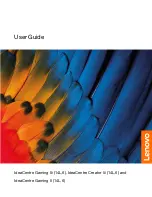
S
o
n
y
V
A
IO
D
e
s
k
to
p
U
s
e
r
G
u
id
e
Glossary
90
PCMCIA
PCMCIA (Personal Computer Memory Card International Association) is the name of the
group that produced the specification for the credit card-sized plug-in boards for laptop
computers. The cards used to be called PCMCIA cards, but as this was rather
unpronounceable, these cards are now termed PC cards. An example of a PC card is a credit
card-sized modem.
Pixel
A pixel (Picture Element) is a part of your screen. Your screen is made up of thousands of
pixels, enabling you to see colours and pictures on it. The more pixels, the higher the
resolution and the better the image quality.
Port replicator
An additional device that you can connect to your notebook. The port replicator contains
ports that enable you to connect additional peripherals (such as a printer or a monitor) to
your VAIO. A port replicator is similar to a docking station, but does not include additional
slots for adding expansion boards or storage devices.
Processor
The processor is the brains of the computer; it processes the instructions of your system’s
programs. The processor is also known as the CPU or microprocessor and can be found on
the motherboard (see this word) of your computer.
Product recovery CD-ROM
The product recovery CD-ROMs include the application recovery CD-ROM and the system
recovery CD-ROM(s)
PS/2
A type of mouse or keyboard port.
PSTN
PSTN (Public Switched Telephone Network) refers to the plain old telephone service, the
national telecommunication networks implementing voice transmission by using analog
signals.
RAM
Short for Random Access Memory, the memory used to run programs and store data in
current use. RAM is the fastest kind of memory to read from and write to. Information stored
in RAM is lost when you turn off the computer. The higher the RAM capacity, the faster your
current data can be processed.
Term
Definition



































